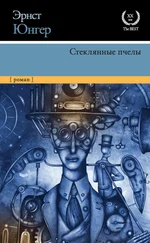Grüninger represents the precursor of a type who is “above it all”: able to cope with a high level of pain and at the same time more subtle in his perceptions. A paradoxical combination, but one that is probably the basis for this development in general, which arises from a pattern of converging forces.
At the table, there was a major who had lived in Moscow long before World War I and told stories of sleigh rides, fine furs, varieties of caviar, and dinners of Asiatic splendor. Today that sounds like a dreamland from a sumptuous fairytale realm, perhaps out of medieval Persia. One of the rich merchants had champagne served in silver chamber pots but immediately ordered it removed when he noticed a guest with an expression of disgust on his face. An example of fusion of coarseness and gentility that has probably changed very little.
Read further in the Book of Samuel. The rivalry between Saul and David gives us the pattern for every conflict between youthful strength and legitimate power. There is no negotiation here.
PARIS, 8 MARCH 1942
A letter from Friedrich Georg in the mail. Among other things, he gives an account of his visit to the Straubs in Nussdorf—in the very house we used to pass so often on our walks to the Birnau Forest. He describes the light in the apartment as having something flower-like about it, “as if the shapes of very bright blossoms formed in the air.”
After dinner visited a young sculptor, Gebhardt, with Weinstock. He partially counts as an émigré and receives clandestine support from people here in the building. On the way, we discussed the situation as usual. It looks as though the three commanders-in-chief in the West are of one mind, and that we can expect the result in the form of a spring offensive. During such discussions, we passed by the catafalque that had been erected on the Place de la Concorde to honor the victims of the English aerial bombings. Dense crowds of Parisians file past the place.
At Gebhardt’s we met Princess Bariatinski. Viewed the sculptures and thought the head by young Drescher particularly striking. The countess said of Claus Valentiner, “He is like a bee: everything he touches, he turns to honey.”
The Doctoresse then arrived to pick me up, and I accompanied her through the quarter where the antiquarian bookshop are; these have always have the power to inspire me to dream, purely through the accumulated historical matter that they radiate.
In the night, I dreamed of various animals. Among them, a salamander with a blue back and a white abdomen speckled in blue and yellow. The exquisite nature of the colors lay in the fact that they were suffused with the glow of life, like fine damp leather. The freshness and delicacy of this palette melted into the creature. The slate blue and somewhat yellowish white of the underbelly dominated the whole effect. Such glorious luster is only possible when animated by life—like the flames that consume love.
Woke up with thoughts of my old plan about the Teoria dei Colori [ The Theory of Colors ], which will treat color as a function of surface.
The fact that I love the most elusive, and probably also the best, in them—that may be the source of the coldness they perceive in me.
We live life merely at its edge: it is but a battlefield where the struggle for life is fought. It is a remote fort, hastily built in the dimension of the citadel into which we shall retreat in death.
The goal of life is to gain an idea of what life is. In the absolute sense, of course, that changes nothing, according to the priests—but it helps our journey.
We bring our chips to the table and gamble for infinitely high stakes. We are like children who play for beans without knowing that each one of them contains the potential for the marvels of blossoms and May.
PARIS, 9 MARCH 1942
In the evening, with the Doctoresse who invited me to the Comédie Française: Les Femme Savantes [ The Wise Women ]. There are still islands where one can find a mooring. In the foyer, Houdon’s sculpture of the seated Voltaire, combining the traits of age and childhood in a wonderful way. It is beautiful how intellectual liveliness easily triumphs over the gravity of years.
PARIS, 10 MARCH 1942
The work of art must reach a state that renders it superfluous—when eternity illuminates it.
Its intangible stature increases as it approaches the highest beauty and deepest truth. The thought becomes less and less painful that, as a work of art with its ephemeral symbols, it must perish.
The same applies to life itself. There we also have to reach a stage in which it is possible for it to cross over easily and osmotically, a stage in which it earns death.
In the evening in the round salon with the new commander-in-chief, Heinrich von Stülpnagel. [50] Cousin of Otto, the former commander-in-chief.
We talked about botany and Byzantine history, a subject in which he is well read. Andronikos is a name that keeps coming up even today. He attributed this and other bits of learning to his frequent poor health. He was often bored in the field hospitals and supplemented the Spartan cadet training with his own studies. In contrast to his brother and cousin, he possesses an unmistakable désinvolture [detachment, unconcern] and, on top of that, an aristocratic bearing. His steady smile makes him appealing. This is noticeable even in the way the staff treats him.
PARIS, 11 MARCH 1942
Carlo Schmid called on me this morning. Years ago, I spent a whole night drinking with him in Tübingen, and now he is in Lisle with the commander-in-chief of Belgium. We talked about his Baudelaire translation, from which he read aloud “Les Phares” [“The Lighthouses”].
Then, about the situation. He felt that nowadays it is less a struggle between human beings than a struggle about them. For him, it is possible to see very concretely how they are caught up and led either to the right or the wrong side.
Visited Gallimard after dinner. Had a conversation with the head of the firm, its director, Stameroff, and Madeleine Boudot-Lamotte about the Falaises de Marbre [ On the Marble Cliffs ]. Gallimard gives the impression of a spiritual as well as intellectual and commanding force—all traits of a good publisher. There must also be something of the gardener in him.
Read on in Samuel. With David something new enters the law—a trace of elegance. You can see how the law changes when mankind observes it differently, without challenging it. The forms remain in place, but they are danced.
Baal—Jehovah had to be merciless with such rival gods. Even today, we should really try to imagine them in a way that lets us see them, even though their altars have long since fallen into ruin. They are not mere milestones on humanity’s path. Dostoevsky saw Baal in London’s railroad stations.
In peacetime, I plan to rearrange my reading matter according to a new plan, with theology as its basis.
PARIS, 12 MARCH 1942
It is said that since the sterilization and extermination of the mentally ill, the number of children born with mental illness has increased. Similarly, with the suppression of beggars, poverty has become more widespread. And the decimation of the Jews has led to the spreading of Jewish characteristics in the world, which is exhibiting an increase in Old Testament traits. Extermination does not extinguish the primeval images; on the contrary, it liberates them.
It seems that poverty, sickness, and all evil rest upon certain people, who support them like pillars, and yet they are the weakest in this world. They are like children who need our special protection. With the destruction of these pillars, the weight of the vault topples. Its collapse crushes the false economists.
Читать дальше


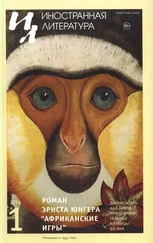





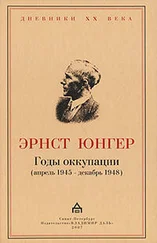
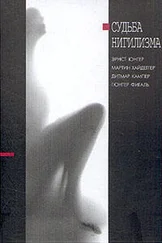
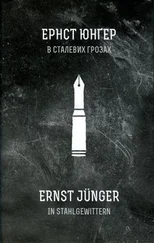
![Эрнст Юнгер - Стеклянные пчелы [litres]](/books/410842/ernst-yunger-steklyannye-pchely-litres-thumb.webp)
